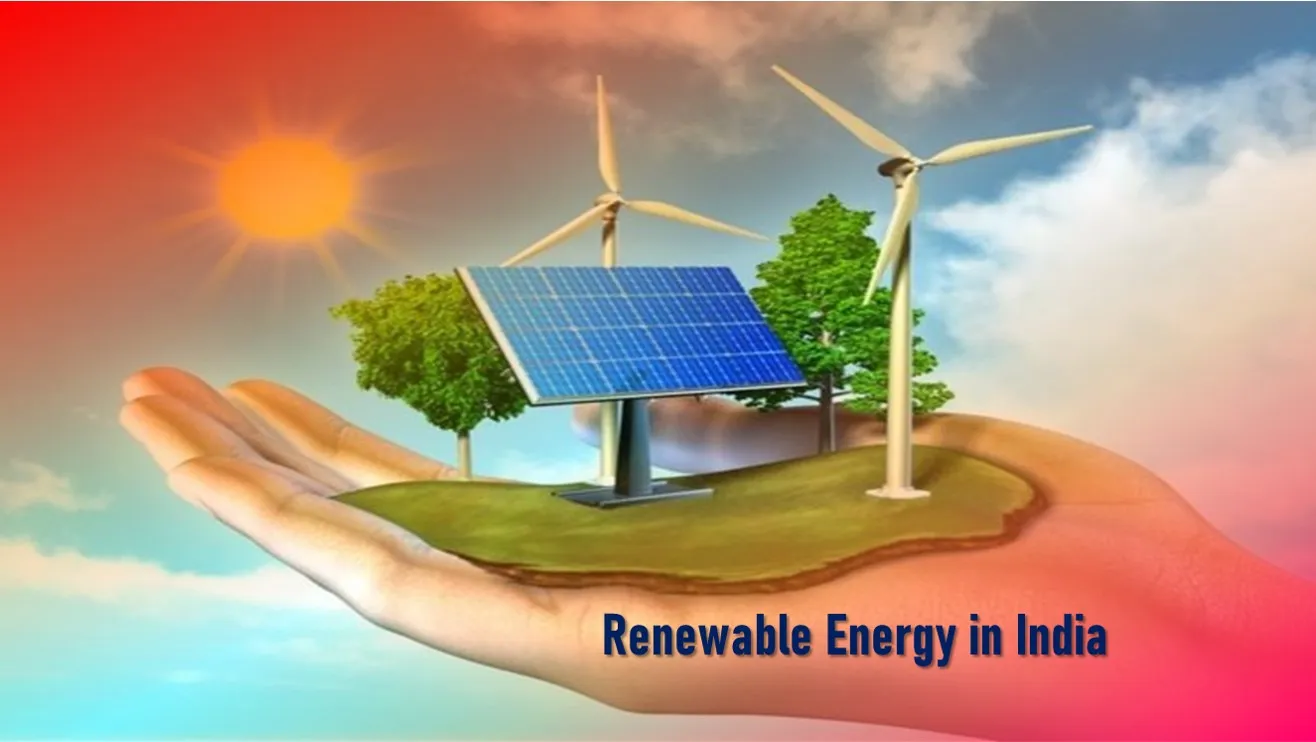Renewable Energy in India: India aims for 500 GW of renewable energy installed capacity by 2030. India aims to produce 5 Mn Tonnes of green hydrogen by 2030. This will be supported by 125 GW of renewable energy capacity. 50 solar parks with an aggregate capacity of 37.49 GW have been approved in India.
Renewable Energy in India
- India stands 4th globally in Renewable Energy Installed Capacity (including Large Hydro), 4th in Wind Power capacity and 4th in Solar Power capacity (as per REN21 Renewables 2022 Global Status Report).
- The country has set an enhanced target at the COP26 of 500 GW of non-fossil fuel-based energy by 2030. This has been a key pledge under the Panchamrit (climate commitments by India). This is the world’s largest expansion plan in renewable energy.
- India’s installed non-fossil fuel capacity has increased 396% in the last 8.5 years and stands at more than 179.322 Giga Watts (including large Hydro and nuclear), about 43% of the country’s total capacity (as of July 2023).
- India saw the highest year-on-year growth in renewable energy additions of 9.83% in 2022. The installed solar energy capacity has increased by 24.4 times in the last 9 years and stands at 67.07 GW as of July 2023.
- Up to 100% FDI is allowed under the automatic route for renewable energy generation and distribution projects subject to provisions of The Electricity Act 2003.
- India is the market with the fastest growth in renewable electricity, and by 2026, new capacity additions are expected to double.
- As per the Central Electricity Authority (CEA) estimates, by 2029-30, the share of renewable energy generation would increase from 18% to 44%, while that of thermal power is expected to reduce from 78% to 52%.
Energy Capacity
- India has a total renewable energy capacity of 168.96 GW (as on 28th February 2023) with about 82 GW at various stages of implementation and about 41 GW under tendering stage. This includes 64.38 GW Solar Power, 51.79 GW Hydro Power, 42.02 GW Wind Power and 10.77 GW Bio Power.
- India has set a target to reduce the carbon intensity of the nation’s economy by less than 45% by the end of the decade, achieve 50 percent cumulative electric power installed by 2030 from renewables, and achieve net-zero carbon emissions by 2070.
- 57 solar parks with an aggregate capacity of 39.28 GW have been approved in India. Wind Energy has an off-shore target of 30 GW by 2030, with potential sites identified.
Also read:
Importance of Non-Proliferation of Nuclear Weapons (NPT)












1 thought on “Government initiatives for Renewable Energy in India”
Comments are closed.